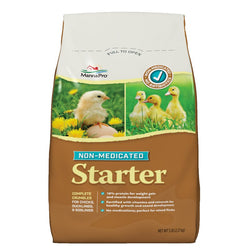All about Virulent Newcastle Disease
Back to blog
Virulent Newcastle Disease (VND) is no joke. It is easily spread among birds (wild and domestic), and once it is contracted, even birds that survive continue to be carriers of the virus, endangering all the birds around them. Because of this, VND is a reportable disease for which euthanasia is recommended. Read on to find out more:
Virulent Newcastle Also called
Pseudo-plague, Asiatic Newcastle, VVND, NVND, VND, Velogenic Newcastle, VN, Pneumoencephalitis, formerly called Exotic Newcastle
Prevalence
Rare
Signs
General signs
Sudden death with no prior symptoms, or respiratory signs with a neurological component, including paralysis or partial paralysis of limbs, head-twisting, walking in circles, walking backwards, clumsiness, tremors. Loose droppings, bleeding nares, pale discharge from eyes and nares, sudden stop in laying, misshapen eggs, egg color changes, drop in interior egg quality, swollen eyes.
Cardinal or diagnostic signs
Lab ID
Cause/s
Paramyxovirus
Communicability
Quite contagious. This is a reportable disease.
Communicability to humans
Humans can get a mild conjunctival (eye) infection from sick birds, or from mishandling the vaccine.
Incubation period
48 hours to 12 days
Latent
Yes.
Endemic
Yes.
Home treatment and/or prevention
Prevention: Practice good biosecurity---always observe quarantine when introducing new birds to your flock. Some vaccinations can require frequent boosters and some methods of vaccination are only about 85% effective. In ovo vaccinations are more effective, but take 3 - 4 weeks to provide full immunity.
Treatment: None. Euthanasia is recommended. Premises and equipment must be thoroughly sanitized afterward. The virus can survive for a month in bedding, droppings, eggs.
Veterinary care
Euthanasia
Recovery
Half or more of birds with this illness will die. Survivors become carriers, and may pass the illness to wild birds and endanger commercial flocks. This is a reportable disease. Euthanasia is recommended.
Other conditions, illnesses and/or diseases with similar signs:
Can be mistaken for Infectious Bronchitis, Domestic Newcastle, Avian Influenza, Coryza, and other respiratory ailments. Can also be mistaken for Fowl Cholera, coccidiosis, and other illnesses producing digestive symptoms. Occasionally the neurological issues are mistaken for Mareks or Lymphoid Leucosis (when one leg seems lame).
Also consider browsing through this list of other chicken illnesses with respiratory symptoms, or this list of chicken illnesses with neurological symptoms.
Virulent Newcastle Also called
Pseudo-plague, Asiatic Newcastle, VVND, NVND, VND, Velogenic Newcastle, VN, Pneumoencephalitis, formerly called Exotic Newcastle
Prevalence
Rare
Signs
General signs
Sudden death with no prior symptoms, or respiratory signs with a neurological component, including paralysis or partial paralysis of limbs, head-twisting, walking in circles, walking backwards, clumsiness, tremors. Loose droppings, bleeding nares, pale discharge from eyes and nares, sudden stop in laying, misshapen eggs, egg color changes, drop in interior egg quality, swollen eyes.
Cardinal or diagnostic signs
Lab ID
Cause/s
Paramyxovirus
Communicability
Quite contagious. This is a reportable disease.
Communicability to humans
Humans can get a mild conjunctival (eye) infection from sick birds, or from mishandling the vaccine.
Incubation period
48 hours to 12 days
Latent
Yes.
Endemic
Yes.
Home treatment and/or prevention
Prevention: Practice good biosecurity---always observe quarantine when introducing new birds to your flock. Some vaccinations can require frequent boosters and some methods of vaccination are only about 85% effective. In ovo vaccinations are more effective, but take 3 - 4 weeks to provide full immunity.
Treatment: None. Euthanasia is recommended. Premises and equipment must be thoroughly sanitized afterward. The virus can survive for a month in bedding, droppings, eggs.
Veterinary care
Euthanasia
Recovery
Half or more of birds with this illness will die. Survivors become carriers, and may pass the illness to wild birds and endanger commercial flocks. This is a reportable disease. Euthanasia is recommended.
Other conditions, illnesses and/or diseases with similar signs:
Can be mistaken for Infectious Bronchitis, Domestic Newcastle, Avian Influenza, Coryza, and other respiratory ailments. Can also be mistaken for Fowl Cholera, coccidiosis, and other illnesses producing digestive symptoms. Occasionally the neurological issues are mistaken for Mareks or Lymphoid Leucosis (when one leg seems lame).
Also consider browsing through this list of other chicken illnesses with respiratory symptoms, or this list of chicken illnesses with neurological symptoms.











